
CHRIS JERICHO Says FOZZY Might Focus On Releasing Singles Instead Of Full-Length Albums
FOZZY singer Chris Jericho has admitted that he’s unsure if the band will release a follow-up to 2022’s “Boombox” album, explaining that he and his bandmates might focus on releasing singles instead. The frontman made the comment in an interview with Eonmusic to promote the band’s November U.K. and…
Read more »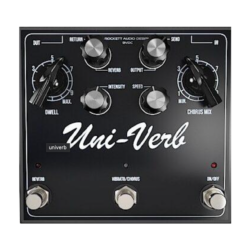
J Rockett Uni-Verb Review
If you were designing a loving and largely accurate stompbox homage to the Uni-Vibe, adding the sound of spring reverb might not be an obvious move. The original Uni-Vibe certainly didn’t have a spring reverb built into that big, clunky enclosure. So why would J Rockett pursue this path? Because it’s incredibly fun and sounds amazing—that’s why.Swirl and SplashThough its reverb component is digital, Uni-Verb’s modulation section is not a digital facsimile. It’s a true, optical chorus-and-vibrato (some might say phaser-and-vibrato) circuit, just like the original Uni-Vibe—right down to the little lamp that pulsates among optical sensors at the center of the ordered and neatly executed circuit board.The hefty enclosure (J. Rockett pedals always feel more like high-quality test instruments from the 1950s than guitar pedals) is a handsome homage to the original Uni-Vibe, right down to little details like the chicken head knobs and “clock” markers that surround the chorus mix and reverb dwell dials. On an original Uni-Vibe, the two big dials (in fact, the only dials) are dedicated to output volume and modulation intensity. Here, those chores are handled by two small knobs in the pedal’s center. The two additional knobs in the middle are reverb intensity (wet/dry mix) and the modulation rate control. Sadly, there is no expression pedal option for the rate, which, functionally speaking, makes the Uni-Verb a little less authentic.Uni-Verb’s modulations are thick and chewy enough to make you feel like you’re sitting in a molasses puddle.The Uni-Verb’s reverb, which is generated via an Accutronics Digi-Log module, is immersive, engaging and fun. At higher levels it exhibits an almost staccato, super-reflective reverb texture rather than the washy decay I hear in the ’60s black-panel Fender combo I used for comparison. This isn’t an altogether uncommon phenomenon in digital spring reverb approximations—even in expensive, DSP-intensive ones. In isolation, this facet of the Uni-Verb’s reverb sound is much more apparent. And it’s most obvious when playing choppy chords or spacious lead lines peppered with strong transients. Passing chords and busier lead lines, however, tend to obscure the phenomenon, and once the reverb signal is enmeshed with the beautiful modulations you rarely notice it. That quirk aside, Uni-Vibe’s reverb still sounds very much like real spring reverb. And when you’re playing or listening to playback it exerts much of the same visceral tug and in-your-face snappiness of real spring reverb.Human Chew ToyAt the highest intensity settings, the Uni-Verb’s modulations are thick and chewy enough to make you feel like you’re sitting in a molasses puddle. I played at these high intensity levels often in my time with the Uni-Verb. You could swim in a two-chord vamp forever here, and the pedal remains articulate in these spaces, even when you push the chorus mix. I’m sure some players would like for the pedal to probe more radical modulation zones. But I love the headroom that’s built in at these high intensity levels. It makes the pedal more articulate and detailed, and you can dial in even more headroom if you keep the output level on the high side but just short of maximum. Needless to say, fuzz is a very sweet match for this pedal. And though, in my experience, some dark fuzzes or overdrives blur modulation detail and overtones in Uni-Vibe clones, the Uni-Verb is very accommodating of these voices. Even Sovtek-style Big Muffs sound alive and full of color and detail riding these waveforms. Gilmour obsessives take note.The VerdictLike so many J. Rockett pedals, the Uni-Verb sounds like the product of thoughtful design and intent, feels like a brick, and reflects a curiosity-driven “what-if” design mentality that, ultimately, yields sounds you don’t typically encounter in a single pedal. It might not fix all your pedalboard overcrowding problems. But on more than one occasion I considered that I could very easily get away with playing a show with this pedal and nothing else. And though at $449 it represents a considerable investment, you’ll be hard-pressed to find a more authentic Uni-Vibe pedal, and harder-pressed to find one that adds up to such a huge-sounding whole.J. Rockett Uni-Verb Demo | PG PlaysUni-Verb Chorus/Vibrato Pedal
The Uni-Verb gives you access to the classic vibe-style textures showcased on such classics as Robin Trower’s “Bridge of Sighs,” Jimi Hendrix’s “Machine Gun,” Pink Floyd’s “Breathe,” and a whole host of others. This stompbox delivers the full gamut of the original’s chorus and vibrato effects, along with a spring reverb for added vintage mojo and dimension. When the guitarists here at Sweetwater really want to nail classic vibe-style tones, we like to place the unit before our drives.
Read more »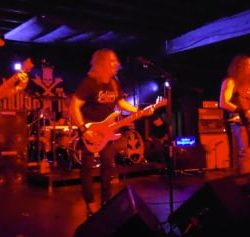
Watch: Ex-MEGADETH Members ELLEFSON, YOUNG And POLAND Kick Off 'Kings Of Thrash' Tour In San Diego
Former MEGADETH members David Ellefson (bass) and Jeff Young (guitar) kicked off the KINGS OF THRASH “The MEGA Years” tour last night (Wednesday, October 12) at Brick By Brick in San Diego, California. They were joined at the concert for several songs by another former MEGADETH member, Chris Poland…
Read more »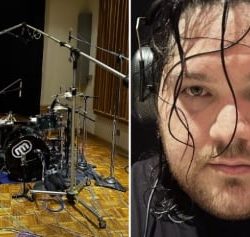
WOLFGANG VAN HALEN Completes Recording Drums For Second MAMMOTH WVH Album
Wolfgang Van Halen, the ex-bassist of the band VAN HALEN and son of the late guitarist Eddie Van Halen, has finished recording the drums for the second MAMMOTH WVH album. The effort will be the follow-up to “Mammoth WVH”, which arrived in June 2021, some five years after the now-31-year-old musician…
Read more »
PEARL JAM Commits To $200 Per Ton CO2 For Carbon Offset Strategy
When asked to think of the legendary rock group PEARL JAM, the first image to come to mind is likely the band on stage but PEARL JAM is more than a band. As a company, PEARL JAM moves tons of equipment and people around the globe and stand up and tear down events for tens of thousands of people in a…
Read more »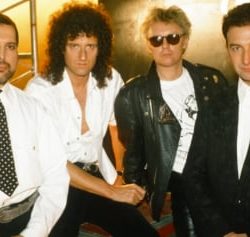
QUEEN Shares Rediscovered Track Featuring FREDDIE MERCURY, 'Face It Alone'
Having generated a media firestorm back in the summer when bandmembers Brian May and Roger Taylor first leaked news of a rediscovered QUEEN song featuring Freddie Mercury being considered for possible release, the highly anticipated “lost” track, “Face It Alone”, drops as a simultaneous worldwide si…
Read more »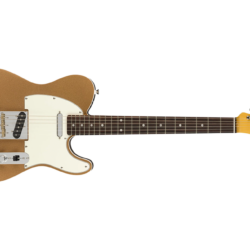
Fender JV Modified ’60s Custom Telecaster Review
A Telecaster is many beautiful things. And being a blank slate is most certainly one of its most appealing attributes. The Telecaster’s tabula rasa appeal transcends its musical versatility, though. It’s sturdy simplicity also makes it easy to imagine and execute modifications—sometimes significant ones—while maintaining a measure of the model’s elegant look, feel, and essence.The JV Modified ’60s Custom Telecaster is a textbook study in making modifications on the sly. It looks (quite dashingly, I might add) like an authentic ’60s Custom Telecaster re-issue. But the Japan-made JV Modified Custom Telecaster—which celebrates Fender’s very fruitful relationship with its Japanese manufacturing facilities, and in particular the excellent guitars they produced in the ’80s and ’90s—is a curious and very practical amalgam of elements. There aren’t any mind-blowing changes or evolutions in the JV Modified Telecaster. Variations of the series and parallel and out-of-phase pickup switching exists in other forms elsewhere in the Fender line. But it’s a well-thought-out and very well-built guitar that exceeds the sum of its parts. Et Tu Jay Dee?If the JV Modified Custom Telecaster feels familiar, it might be because you had the good fortune to play a Japan-built Jerry Donahue Telecaster from the 1990s. The JV Modified and the Jerry Donahue differ in significant ways. JD’s Tele has a Stratocaster pickup in the neck position. It also has a 5-way switch that includes an out-of-phase neck/bridge combination position, as well as a fifth position that employs the neck pickup with the tone circuit removed. But there is much that is reminiscent of the JD Telecaster here in terms of function, sound, and style. The soft V neck on the JV modified recalls the slightly heftier V neck on the JD. And the out-of-phase pickup options on the JV Modified, which are activated by a push-pull tone control in positions 2 and 4, enable some of a Stratocaster’s 2- and 4-position snorkeliness. Then there’s that double-bound Custom Telecaster body—a feature of both guitars that adds an upscale air to the otherwise economical Telecaster profile.The heft of the thick soft-V in the palm imparts a feeling of extra leverage that incites you to lean into bends—or explore the pitch nuances within them—just a bit more.While suggestive of, and perhaps even inspired in some measure by, the Jerry Donahue Telecaster, the JV Modified is individual in other ways. The 4-position switch and push-pull tone knob mean a two-step process for accessing out of phase tones in many situations. But the bridge/neck series setting in position 4 often feels transformative—lending thick humbucker heft to the output with a quick flick. So, there is truly a lot of tone crafting potential right at your fingertips.Ergonomic ease is built into the guitar elsewhere, too. There’s nothing too uncommon about medium-jumbo frets and a 9.5″ radius on a modern Fender. The company made this flatter radius a near-de-facto standard in recent years. But when combined with the soft-V neck profile (and, incidentally, a perfect setup), the JV Modified feels magical. Naturally the medium-jumbo frets and flatter radius make the JV Modified feel bend-happy, but having the heft of the thick soft-V in the palm imparts a feeling of extra leverage that incites you to lean into bends—or explore the pitch nuances within them—just a bit more. Your experiences may vary, but I found a lot of unconscious inspiration in this neck. Deep bends aren’t the only stylistic move the JV Modified’s neck is likely to coax from your hand. It feels fast and prompts both fleet-fingered Bakersfield ripping and Richard Thompson sequences of hammer-ons, pull-offs, bends, and quasi-raga dashes along its length. And while hands (and hand-injury problems) are highly individual, I found the soft V did wonders for keeping my paws feeling fresh over an extended session.Zing and PingIf the JV Modified Custom Telecaster has an Achilles heel—and this is a highly subjective assessment—it’s in the pickups, which Fender lists as a “Vintage-Style Single-Coil Tele” units in the specs. Outside of any comparison to another Telecaster, they’re great. They are comparatively quiet and responsive to touch dynamics. But they lack some of the full-frequency meatiness and grit you hear in a lot of ’60s and ’60s-style Telecasters and tend to feel more zingy and airy rather than biting in the critical high-midrange zone. If you use pedals to create extra gain, this might not be a problem. But Tele players that prefer ultra-streamlined rigs, or no pedals at all, may miss the ability to summon the aggression they need from the guitar itself at full throttle.The VerdictThe JV Modified Custom Telecaster is stunningly pretty and full of possibilities. The out-of-phase and series/parallel combined pickup options give you a lot of color to work with—particularly if you make creative use of fuzzes and higher-gain drives that can be drastically recast by the additional voices (an out-of-phase setting and a Super Fuzz is one hell of a way to leave your mark on a solo). But, at least for this reviewer, it’s the slinky playability combined with the just-right heft of the soft-V neck that make the JV Modified feel special. Factor in the wealth of voices available right at your picking hand, and you have a very complete stage instrument. Like most Japanese Fenders, the quality is impeccable, too. All of which makes the $1,349 street price look fair—and then some.Fender JV Modified ’60s Custom Telecaster Electric Guitar – Firemist Gold
Based on the highly sought-after “Japanese Vintage” reissued Fender guitars from the ’80s, the Fender JV Modified ’60s Custom Telecaster offers a refined take on a classic electric guitar. Dual vintage-voiced single-coil pickups yield the iconic Tele tones that make it such a versatile instrument for a variety of styles. Four-way switching offers a wide sonic range to explore, expanded by the push-pull tone control which allows access to out-of-phase tones too. Complete with a stout Thick Soft “V” neck profile with satin finish for fast playability, and a double-bound body for undeniably classy looks, there’s a lot to love about the Fender JV Modified ’60s Custom Telecaster.
Read more »
STEPHEN PEARCY Readies New Collection Featuring Previously Unreleased RATT Songs, Solo Music And Re-Recordings
RATT singer Stephen Pearcy will release a new collection of music, “Legacy”, in early 2023 via Golden Robot Records. According to Stephen, the set will include never-before-heard RATT songs, solo tracks, re-recordings and new versions of previously released tunes.
Late Tuesday night (October 11), Pe…
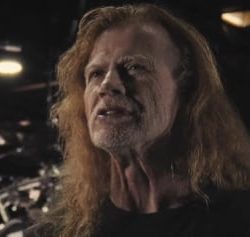
Watch: MEGADETH's DAVE MUSTAINE Shows Off His Live Tour Rig Featuring SEYMOUR DUNCAN's PowerStage 700
Seymour Duncan has uploaded a three-minute video in which MEGADETH’s Dave Mustaine discusses his use of the PowerStage 700 to bring his heavy, thrashing guitar tones to the masses.
The PowerStage 700 is a game-changing product for guitar players that want uncompromising tone in a compact power amp….
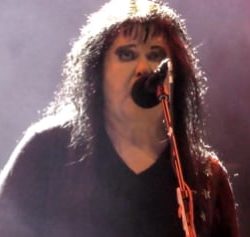
BLACKIE LAWLESS Says Fans Made First W.A.S.P. U.S. Tour In A Decade A Reality: 'Promoters Didn't Think This Band Could Sell Tickets'
W.A.S.P. will embark on its first U.S. tour in a decade this fall. The trek will coincide the band’s 40th anniversary and will include support from ARMORED SAINT and MICHAEL SCHENKER on select shows.
Speaking to the “Appetite For Distortion” podcast, W.A.S.P. leader Blackie Lawless explained why he…
